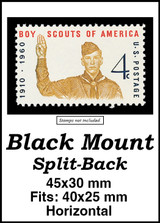US #2538
1991 William Saroyan
- Ninth stamp in Literary Arts series
- Joint Issue with Russia
- Honors playwright and novelist Saroyan
Category of Stamp: Commemorative
Set: Literary Arts
Value: 29¢, First-Class mail ... more
US #2538
1991 William Saroyan
- Ninth stamp in Literary Arts series
- Joint Issue with Russia
- Honors playwright and novelist Saroyan
Category of Stamp: Commemorative
Set: Literary Arts
Value: 29¢, First-Class mail rate
First Day of Issue: May 22, 1991
First Day City: Fresno, California, and Yerevan, Armenia, USSR
Quantity Issued: 161,000,000
Printed by: J.W. Fergusson and Sons for American Bank Note Company
Printing Method: Photogravure
Format: Panes of 50, from printing cylinders of 200 subjects (10 across, 20 down)
Perforations: 11
Joint Issue: Russia #6002
Reason the stamp was issued: This stamp honors William Saroyan, a short story writer, novelist and playwright. A joint-issue stamp was released in Armenia, where Saroyan was born. At the time the stamp was issued, Armenia was part of the Soviet Union.
About the stamp design: The image on the William Saroyan stamp was the work of Ren Wicks. He used photos taken by another Armenian, Paul Kalinian. The photographer asked that his fee for the use of his photos be paid in Saroyan stamps.
First Day City: The First Day of Issue ceremony took place at the William Saroyan Theater in Fresno, California. The minister of communications of Armenia joined a US Postal Service official at the ceremony and dedicated the Russia joint issue stamps.
About the Literary Arts Series: The Literary Arts Series began in 1979 with a John Steinbeck stamp. The objective of the series is to honor America’s most renowned authors. As the USPS put it, “These skillful wordsmiths spun our favorite tales – and American history along with them.” The series honors both well-known and lesser-known authors, making it an encapsulation of America’s rich and varied literary history.
History the stamp represents:
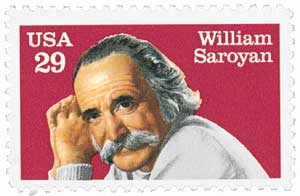
Author William Saroyan was born on August 31, 1908, in Fresno, California.
The son of Armenian immigrants, Saroyan and his siblings were placed in an orphanage when he was three following his father's death, while their mother searched for a job. Five years later, they were reunited with her after she found work in a cannery.
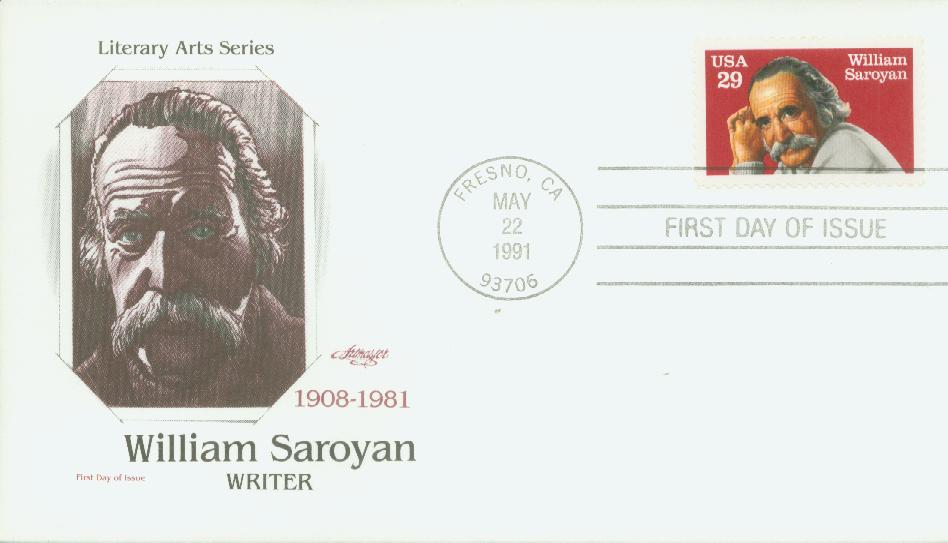
Saroyan's mother showed him some of his father's writings when he was a child, which inspired him to become a writer himself. He worked other jobs to support himself, including office manager of the San Francisco Telegraph Company. Saroyan sold his first story to a magazine when he was 20 and published several stories over the next few years. The Armenian-American fruit growers he was raised around, as well as the experiences of immigrants, inspired many of these.

Saroyan's first major success came in 1934 with his short story, "The Daring Young Man on the Flying Trapeze." The story followed a struggling writer attempting to make a living in the Depression. Though he wrote during the Great Depression, Saroyan managed to keep his stories light-hearted and optimistic.
Earning significant royalties from his first successful story, Saroyan spent some time in Europe. He met a number of interesting people in the Soviet Union and Europe and published a series of stories about them. Among the subjects of his memoirs over the years were George Bernard Shaw, Jean Sibelius, and Charlie Chaplin.

Saroyan wrote his first play in 1939, My Heart's in the Highlands, which was a comedy about a young Armenian boy and his family. That same year he also produced the play The Time of Your Life, which won a Pulitzer Prize. However, Saroyan refused the award because he believed it was "no more great or good" than anything else he had written. That play was later turned into a film in 1948, starring James Cagney.
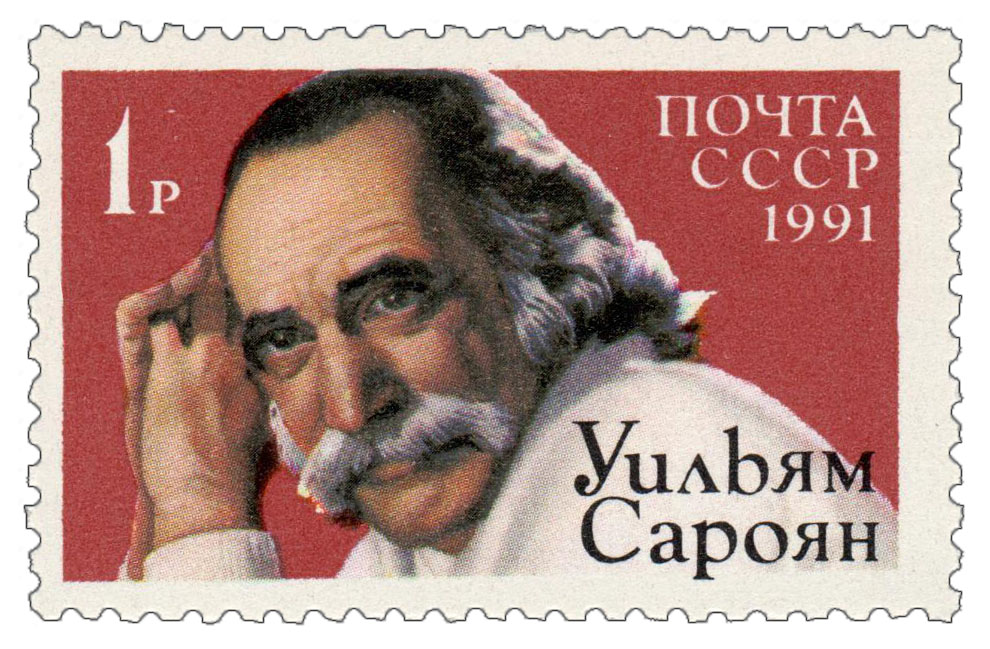
Saroyan worked on the screenplay for Golden Boy (1939) as well as The Human Comedy (1943). He had issues with the produces on The Human Comedy and was fired from directing the film. Saroyan then used the film as the basis for a novel. Saroyan won a 1943 Academy Award for Best Story for the film and the novel was later adapted into a musical in 1983. However, after his negative experiences with the producers, he refused to allow Hollywood to adapt any of his future novels.
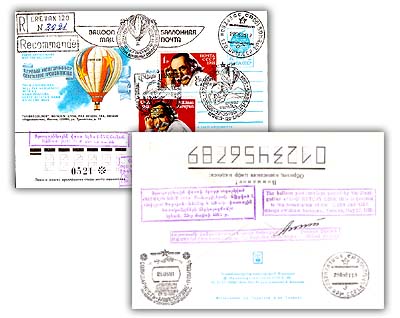
Saroyan served with a film unit during World War II and saw his popularity wane after the war. His sentimentality and idealism didn't seem to match the times. He continued to write and was also an accomplished painter. He produced abstract expressionist works that were exhibited in New York City galleries.

Saroyan spent several years in Europe before settling in Fresno, California. He was inducted into the American Theater Hall of Fame in 1979. He died on May 18, 1981, in Fresno, California. During his long career, Saroyan wrote hundreds of short stories, essays, novels, plays, and autobiographical works in more than 40 books. He's been called "one of the most prominent literary figures of the mid-20th century" and was honored with a statue in Armenia.
Less 